Ever thought, “What if the Earth had no tilt?” It is perhaps a strange thought, but it reveals just how delicate and meaningful our planet’s design really is. Maybe you were given it as a science project at school, or perhaps you’ve never really thought about it. But make no mistake, this is no small question.
Every year, we honour the passing of the seasons and events such as the Summer Solstice as a celebration of light, rhythm and renewal. But these are only possible because of the Earth’s tilt. So what would like be like if the Earth had no tilt?
Earth’s 23.5° axial tilt is responsible not only for the change in seasons but for the flourishing of ecosystems, cultural rituals, and even the spiritual cycles that shape our inner world.
Without it, life would feel very different – if it existed at all.
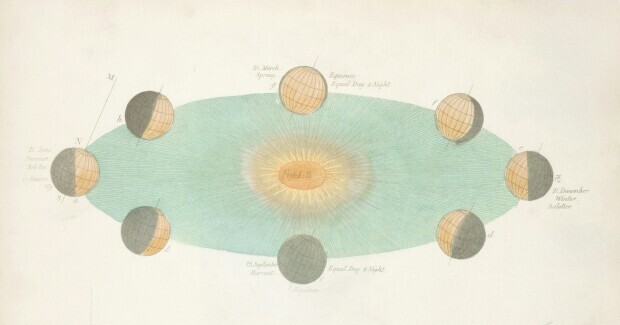 Old cosmological drawings and modern graphics illustrate the seasons.
Old cosmological drawings and modern graphics illustrate the seasons.
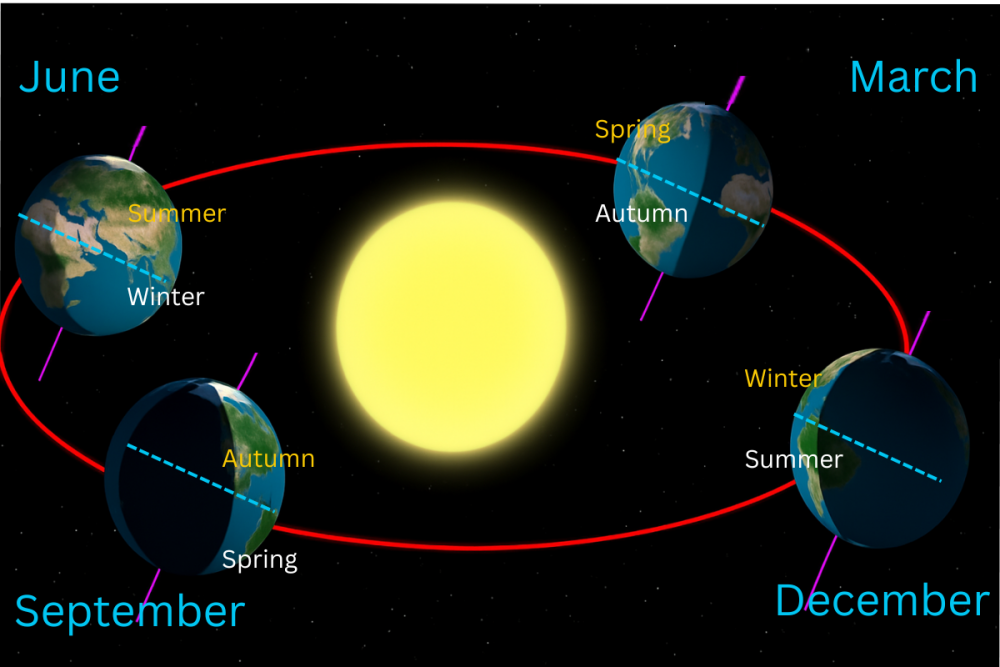
What happens if the Earth has no tilt?
Or how Earth’s axial tilt shapes our seasons, planet, and ourselves
If the Earth weren’t tilted on its axis:
- Every place on Earth would receive the same amount of sunlight every day of the year
- There would be no summer or winter, no springtime growth or autumn release
- Day length and temperature would stay almost exactly the same in each location, year-round
Result?
The equator would become a zone of permanent heat, while the poles would sit in eternal cold and twilight. These extremes would make vast regions of the planet uninhabitable.
Source: NASA – What Causes the Seasons?
The Earth’s tilt is responsible for the changing seasons because different parts of the planet receive varying amounts of sunlight throughout the year.
- When the Northern Hemisphere tilts toward the Sun (around June), it experiences summer, while the Southern Hemisphere has winter.
- Six months later, the Southern Hemisphere tilts toward the Sun (around December), bringing summer there and winter to the north.
This tilt also affects day length and temperature variations, making life on Earth more dynamic. Without it, we wouldn’t have distinct seasons
A world without seasons: survival would be a challenge
- Biological Impact:
Seasons guide migration, hibernation, mating cycles, and food growth. Without these changes, ecosystems would collapse or radically transform - Agriculture:
Farming as we know it would be impossible. Crops rely on seasonal cues and temperature variation to grow, ripen and rest - Evolutionary Development
The presence of seasons may have driven the development of complex life. Without change, evolutionary pressure would be vastly reduced
Source: Live Science – What if there were no seasons?

What other planets teach us about tilt
- Mercury: Tilted at only 0.03°, Mercury has no seasons and an extreme, harsh surface environment.
- Mars: With a tilt of ~25°, Mars experiences long, cold seasons – although its orbit causes greater variation than Earth’s.
Source: Britannica – Obliquity
Our planet’s tilt is a rare and remarkable gift – just enough to offer variety, but stable enough to support life.
Earth’s wobble – and what it means for us
We’ve said that the Earth has a tilt of 23.5° from its axis and we often think of the Earth as solid, stable – our grounding point in the vastness of space. But did you know that Earth actually wobbles on its axis and this degree of tilt changes too?
This slow, graceful motion affects everything from the position of the North Star to the timing of our seasons – and even influences the long-term climate cycles that shape life on Earth.
It’s a beautiful reminder that even what seems fixed and certain is gently shifting. And that, too, many see as sacred.
Obliquity: What causes the Earth to wobble?
The Earth’s “wobble” is known as axial precession – a slow, circular movement of Earth’s axis, much like a spinning top that starts to lean as it turns.
This happens because:
- The Earth is not a perfect sphere – it bulges at the equator
- The gravitational pull from the Moon and the Sun tug on that bulge
- This causes Earth’s axis to slowly trace a circle in the sky over about 26,000 years
We’ve learned how Earth’s axial tilt (currently 23.44°) is what gives us the seasons – it causes different parts of the world to receive more or less sunlight throughout the year.
Over roughly 41,000 years, the tilt gently fluctuates between:
- 22.1° (a lower tilt – milder seasons)
- 24.5° (a higher tilt – more extreme seasons)
This variation is part of a pattern known as the Milankovitch Cycles, which also includes:
- Eccentricity (changes in Earth’s orbital shape)
- Axial precession (the wobble)
- Obliquity (the tilt angle)
These long-term shifts play a role in triggering ice ages and other climate shifts throughout Earth’s history.
So even though our planet seems steady, its orientation is slowly shifting all the time. Ancient cultures such as the Greeks and the Mayans studied these cosmological changes and the Mayan Grand Cycle lasts approximately the same as the Earth’s precession.
What does Earth’s wobble mean for the North Star?
Because the Earth’s axis is moving, the North Celestial Pole – the point in the sky the axis points toward – also changes over time. The star we currently call the North Star is Polaris. but the North Star isn’t always the same star!
Polaris will stay quite close to true north until around 4,000 CE, but others – like Vega – will take its place in the far future. Vega was actually the North Star around 12,000 BCE, and it will be again.
Here’s a look at some of the stars that have taken on the role of North Star (or will in the future):
| Star name | Constellation | Approximate Year as North Star |
| Thuban | Draco | ~2,800 BCE |
| Kochab | Ursa Minor | ~1,500 BCE |
| Polaris | Ursa Minor | ~2,000 CE (now) |
| Errai (γ Cephei) | Cepheus | ~3,000 CE |
| Alderamin | Cepheus | ~7,500 CE |
| Vega | Lyra | ~14,000 CE |
So even our “guiding star” is not truly fixed.
How these motions shape our world
These cycles – wobble, tilt, and orbital shape – might sound abstract, but they’re incredibly important:
- They shape the length and strength of seasons
- Influence long-term climate patterns
- Affect the angle of sunlight, especially near the poles
- Determine which stars and constellations dominate our night skies over time
In a sense, they form the deep rhythm behind all of Earth’s visible changes. What’s interesting is that to a human on Earth, they are imperceptible until you start to look at the bigger picture. But that doesn’t mean they are not happening.
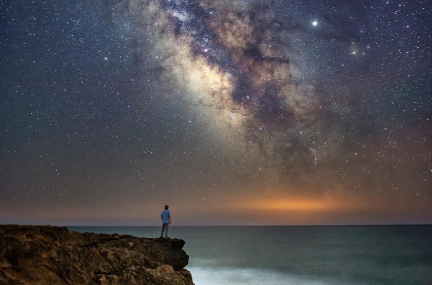
A spiritual reflection
We often long for constancy. But nature shows us that change is not chaos – it is rhythm.
It’s beautiful to know that even Earth – as old, vast and grounded as she is, leans, shifts, and wobbles in her own slow dance through space. Even the North Star changes. Even the seasons vary. Even time is curved.
As spiritual beings, we can learn from these celestial events. Just like the planet beneath our feet, we are meant to evolve. So if you’re in a season of transition or reflection, take comfort in this: it’s not a detour – it’s part of the pattern.
We experience time not only through clocks and calendars, but through the rhythms of the Earth.
- ? Spring inspires renewal
- ☀️ Summer invites creativity and expansion
- ? Autumn teaches release and letting go
- ❄️ Winter offers stillness and introspection
Without these rhythms, we’d lose our sense of sacred flow. Life would feel flat and linear, with no natural reflection points, no energetic ebb and flow, no invitations to align with nature’s pace.
✨ Why this matters now
As we pause to celebrate the Summer Solstice, let’s also honour what makes it possible: the Earth’s tilt.
This quiet lean gives us the changing seasons, the Wheel of the Year, the ritual of renewal, and the very conditions that allow life, beauty and growth.
You are not meant to be static. You are meant to move, grow, shift, and shine in your own perfect rhythm.
Without tilt, there is no change.
No sacred cycle.
No spiritual flow.
Let’s embrace it as part of life and celebrate it wholeheartedly.

? Further reading and resources:
- NASA: What Causes the Seasons?
- Royal Museums Greenwich: What is the Summer Solstice?
- Live Science: What if Earth Had No Seasons?
- Britannica: Obliquity and Precession
Related posts
The spiritual meaning of the Summer Solstice
How to use crystals in your spiritual practice

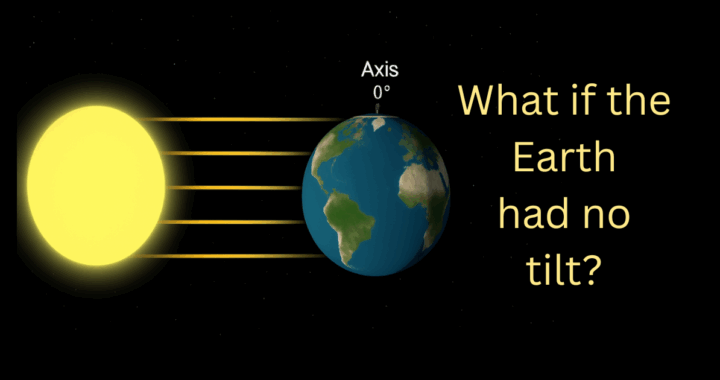
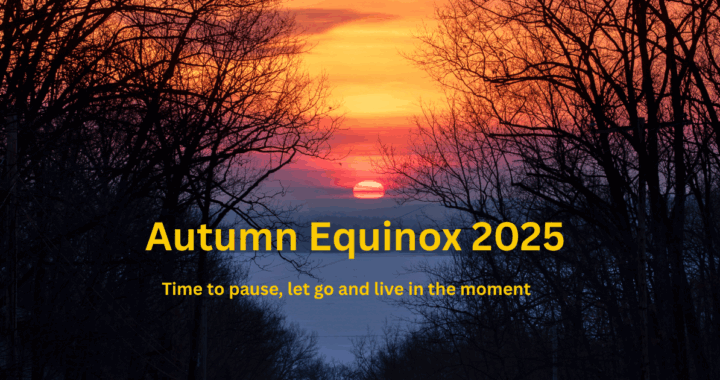
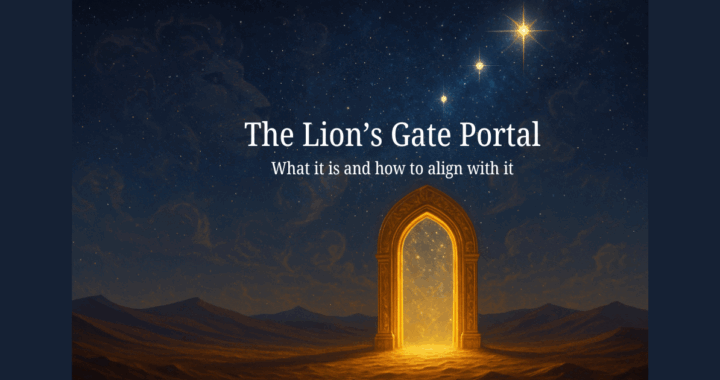
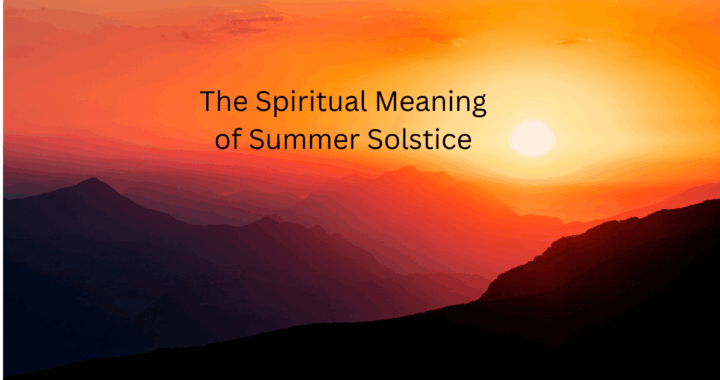
This is one question that I have never actually asked myself, but this was a really interesting article to read.
I had no idea that if the earth was not tilted, then life as we know it would change for the worse. Imagine no seasons or weather changes, or even living in permanent twilight. Life would almost be unbearable.
We probably would also have major food shortages as you mentioned, unless some other source of food was invented to adapt to a straight world.
Hi Michel. Great to see you again and thanks for taking the time to read the article and leave your comments. This question is indeed, an interesting one but I think it just shows how absolutely amazing and designed our universe actually is. I believe that we live in the most fantastic and creatively beautiful place and the tilt and precession of the Earth are just a couple of examples of this. Thanks for stopping by. Gail
Thanks for sharing an informative article!
This topic does a great job of explaining how Earth’s tilt is essential for creating the seasons, supporting life, and shaping our environment. It balances clear scientific information with thoughtful reflections on how these natural rhythms influence culture and spirituality. The inclusion of Earth’s wobble and changing North Star adds depth and shows how dynamic our planet is. Overall, it’s an engaging and meaningful exploration that connects science with a sense of wonder.
Keep up the good work!
Hi SJ. Thanks for taking the time to read this article and leave a comment. I’m glad you enjoyed reading it and found it useful and meaningful. I intend to ‘keep up the good work’ as you say, so please do come back to read more. Have a great day, Gail